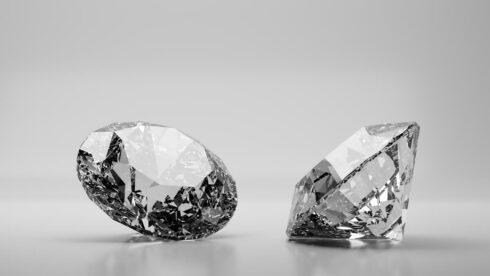Diamonds are renowned gemstones composed of carbon atoms arranged in a crystal lattice structure. Their unique properties, such as unmatched hardness and brilliant luster, have made them highly sought after for jewelry and industrial uses. You can buy perfect diamonds in store Reuven Veksler .
History of Diamonds
 Ancient Times
Ancient Times
- India (4th century BC): India was the primary source of diamonds, where they were discovered in riverbeds. Ancient Indians valued diamonds for their brilliance and believed they had mystical powers. They were initially used in religious icons, as talismans, and later as ornaments for the elite.
Middle Ages
- Trade Routes: Diamonds began to travel along trade routes connecting India with Europe. By the 13th century, they had become popular among European royalty.
- Venetian Merchants (15th century): Venice became a center for diamond cutting and trading, where the demand for faceted diamonds rose.
Renaissance to Enlightenment
- 16th — 18th centuries: Diamonds continued to be popular among European nobility. The advent of diamond cutting techniques in Venice, such as the «point cut» and later the «table cut,» enhanced their appeal.
- Brazilian Discoveries (1725): Diamonds were discovered in Brazil, which became a significant source and reduced dependency on Indian diamonds.
Modern Era
- South African Discoveries (1866): The discovery of diamonds in South Africa marked a new era. Large-scale mining operations began, and the famous Kimberley Mine was established.
- De Beers Consolidation (1888): De Beers Consolidated Mines, Ltd. was founded, which came to dominate the diamond market, controlling supply and influencing demand.
Classification of Diamonds
Diamonds are classified based on several criteria, including their physical and chemical properties, such as carat, cut, color, and clarity (the 4 Cs), as well as their origin and type.
The 4 Cs
- Carat:
- Measures the weight of the diamond. One carat equals 200 milligrams.
- Larger diamonds are rarer and thus more valuable.
- Cut:
- Refers to how well a diamond is shaped and faceted to reflect light.
- Includes shape (e.g., round, princess, emerald) and the quality of the cut (e.g., excellent, very good, good).
- Color:
- Assessed based on the absence of color. The grading scale ranges from D (colorless) to Z (light yellow or brown).
- Fancy color diamonds (blue, pink, etc.) are graded separately and can be highly valuable.
- Clarity:
- Measures the presence of internal (inclusions) or external (blemishes) flaws.
- Graded from Flawless (FL) to Included (I), with several intermediate grades (e.g., VVS, VS, SI).
Diamond Types (Based on Chemical and Physical Properties)
- Type Ia:
- Contains nitrogen atoms in clusters.
- Most common type of natural diamonds (about 98%).
- Type Ib:
- Contains isolated nitrogen atoms.
- Rare, includes some naturally occurring yellow and brown diamonds.
- Type IIa:
- Very pure, with no significant nitrogen or boron impurities.
- Often colorless or light-colored and includes some of the world’s most famous diamonds.
- Type IIb:
- Contains boron, which can give diamonds a blue or gray color.
- Conductive to electricity and also quite rare.
Notable Historical Diamonds
- Koh-i-Noor: One of the largest and most famous diamonds, originating from India.
- Cullinan Diamond: The largest gem-quality rough diamond ever found, discovered in South Africa.
- Hope Diamond: A large, blue diamond with a storied history, now housed in the Smithsonian Institution.
Industrial and Synthetic Diamonds
Apart from being precious gemstones, diamonds have significant industrial applications due to their hardness. They are used in cutting, grinding, and drilling tools. Synthetic diamonds, created through processes such as High Pressure High Temperature (HPHT) and Chemical Vapor Deposition (CVD), are used both industrially and increasingly in jewelry.
The fascination with diamonds spans centuries, rooted in their beauty, rarity, and unique physical properties, making them symbols of wealth, power, and romance.
Leave a Reply